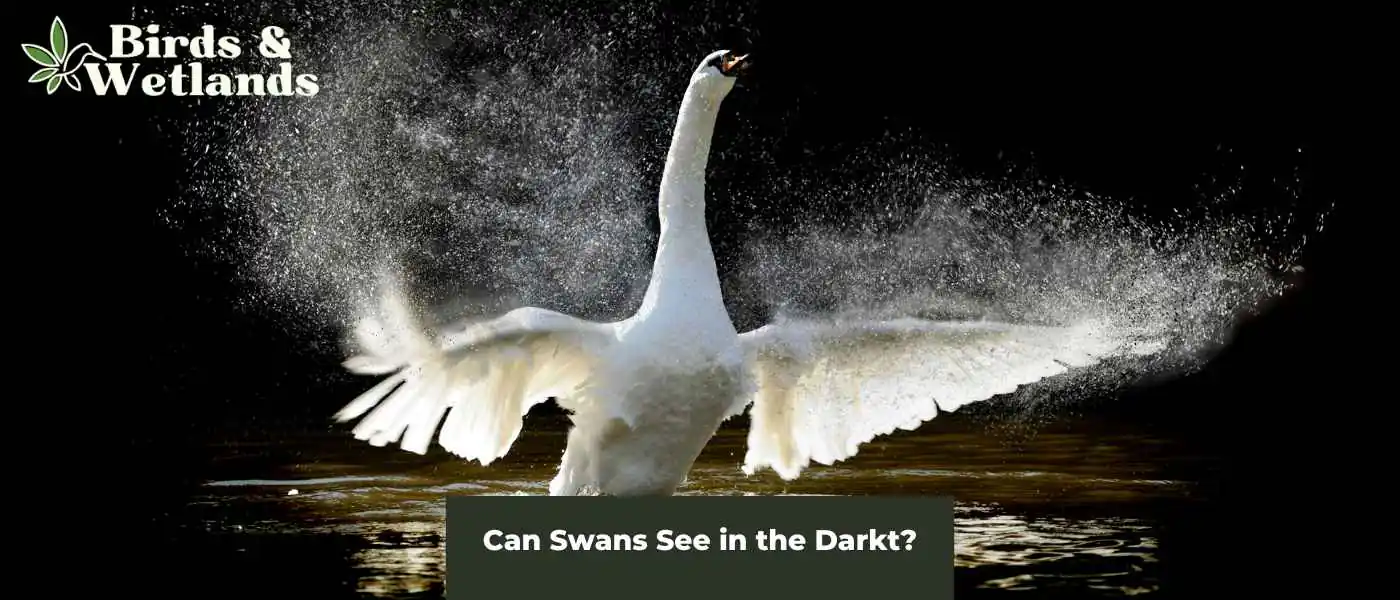Good vision is essential for most birds, as it helps them navigate, find food, and evade predators. Birds have evolved to have highly specialized visual systems that allow them to see in a wide range of light conditions, from bright sunlight to dim twilight. This is particularly important for birds active during the day, as they need to be able to see clearly to survive.
Swans, like many birds, can see at night, but not as well as nocturnal animals such as owls. The eyes of nocturnal animals are much more sensitive to minimal light levels, allowing them to see in almost complete darkness.
Swans are better adapted to seeing in brighter light conditions, such as areas with artificial light or during the day or on the full moon.
Key Takeaways on Bird Vision
- Swans have good vision that they use to spot predators and find food.
- Other birds such as owls have better night vision than swans.
- Generally, birds have been vision than human eyes.
Do swans have UV vision?
UV vision, also known as ultraviolet vision, is the ability to see the light in the ultraviolet spectrum. This light is not visible to humans, but some animals, including birds, can detect it.
Birds such as blue tits have specialized receptors in their eyes called double cones that allow them to see UV light and four colors. They have some of the best vision in the animal kingdom.
This vision will enable birds to see colors and patterns that are not visible to humans, such as UV-reflective plumage, which can be used to attract mates and territorial displays.
Individual birds have a much wider range of UV color vision than human vision, and by extension other mammals. Humans can only see the light in the visible spectrum, which ranges from about 400 to 700 nanometers.
While UV vision has been extensively studied in birds such as ducks, it still needs to be discovered whether swans possess this ability. However, the fact that swans belong to the same family of waterfowl as ducks, it is possible that they may also have UV vision.
Further research is needed to determine whether swans have UV vision and if it plays a role in their behavior and ecology.
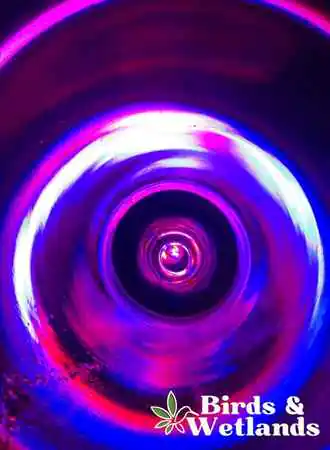
Do swans have good vision?
Swans are diurnal birds with strong wings and known to have excellent vision, which is a crucial adaptation for their survival and can affect bird behavior. They use their sharp eyesight to spot incoming predators and other animals and to search for food.
Swans can spot small aquatic creatures, such as fish, insects, and crustaceans, from a distance, allowing them to quickly and efficiently forage for food.
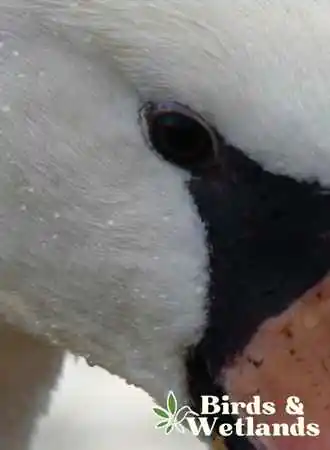
FAQs on Swans
What are the significant differences between trumpeter and tundra swans?
The trumpeter swan and the tundra swan are two species of swans found in North America. Both are large waterfowl and are similar in appearance, but there are a few key differences between the two.
One major difference is size. The trumpeter swan has a black bill and is the largest waterfowl native to North America, with a body length of up to 60 inches and a wingspan of up to 8 feet. On the other hand, the tundra swan is slightly smaller, with a body length of up to 50 inches and a wingspan of up to 7 feet.
Another difference between the two species is their vocalizations. The trumpeter swan is known for its deep, resonant call, which sounds like a trumpet. On the other hand, the tundra swan has a higher-pitched, honking call.
Regarding habitat, trumpeter swans are primarily found in freshwater habitats such as marshes, ponds, and lakes. Tundra swans, on the other hand, are often found in coastal areas and along major river systems.
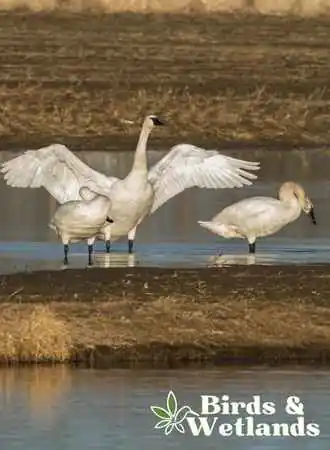
Does North America have black swans?
Black swans, known for their jet-black feathers and more striking red bills than other species, are a species that is native to Australia. They are not naturally found in North America and were introduced to the continent in the late 19th century.
In terms of appearance, the black swan is known for its distinctive black plumage and bright red bill. They are large water birds, with males typically weighing around 20 pounds and females around 16 pounds. Their wingspan can reach up to 6.5 feet.
Black swans are known to inhabit a variety of wetland habitats, including swamps, marshes, and lakes. They are omnivorous and feed on various aquatic plants, small fish, and invertebrates. The bird dips its head and neck under the water when feeding and and dabble on the water’s surface.
They are also known for their elaborate nesting habits, building large nests made of reeds and other aquatic plants.
In Australia, these swans migrate from the south west to the south east during rainfall season or when all the cygnets hatch.
This Australian bird was brought to North America as an ornamental bird for display in parks and zoos. However, some of these birds have escaped captivity and have started to establish breeding populations in the wild, particularly in Florida.
A flock of black swans have been spotted in some locations in the state, particularly in the southern regions. However, their populations are still small and not considered native species in North America.

Are mute swans native to North America?
Mute swans are large, graceful birds that are easily recognizable by their distinctive appearance. They have primarily white plumage, a long, curved neck, and a black knob at the base of their bill. They typically weigh between 18 and 25 pounds and have a wingspan of up to 8 feet.
The mute swan is typically found in wetlands, including marshes, ponds, and lakes. They are opportunistic feeders and will eat various aquatic plants and small animals. They usually nest on the ground, building a large nest made of grass and other vegetation. Their nest is often vulnerable to natural events.
Mute swans are not native to North America but are introduced species. They were brought to North America from Europe in the late 1800s for ornamental purposes.
Today, the mute swan population in North America is the largest outside their native range. However, the growing population of these swans in some states in the US has raised concerns about their impact on native species and habitats.
In some areas, these swans have been classified as an invasive species due to their tendency to displace native waterfowl such as the Canada geese and other swan species and damage aquatic vegetation.
Some states have implemented management programs to control the population of this swan species to protect native species and habitats.
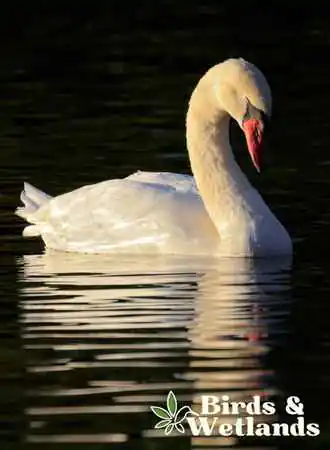
At what age does a juvenile swan start mating?
Juvenile swans typically start mating at around 3 to 4 years of age.
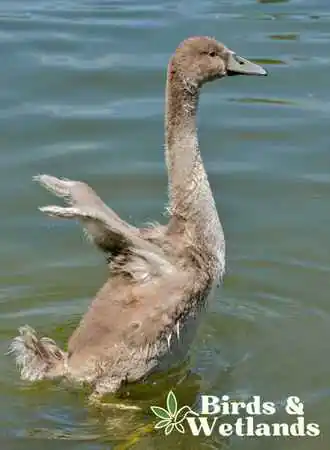
Do female swans eat before nesting?
Yes, females do eat before nesting. They need to build up energy reserves in order to lay eggs and care for their young.
Does male swan have a cloaca?
Yes, mal swans have cloaca.

